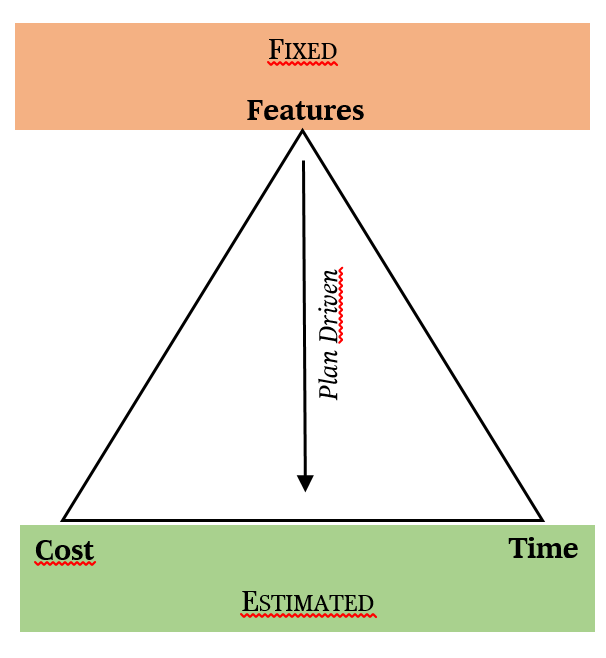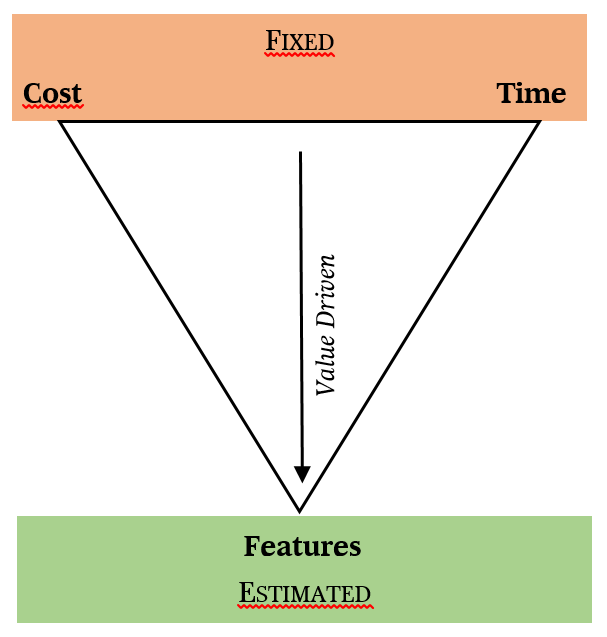After almost twenty years of life of the Agile Manifesto, we can confidently say that such a document marked a radical change in many areas of the world of work. Thanks to its founding values and principles, a cultural re/evolution started and it is now at its highest peaks on the implementation perspective. However, can we say that all the promises of the Agile Manifesto have been achieved?
We think that the big change Agile introduced, has been possible because the values and principles gathered in that document, vividly describe in their truest essence, the meaning of work for human beings.
That could sound a bit romantic, but actually Agile helps the ones who create a product or service to deliver value by leveraging their own passion and talents; Agile also favors strong connection with their users and customers, aiming to create the most possible satisfying and pleasant experience.
As we know, Agile is first a change of mindset, a change in culture; then, based on that and relying on its practices and methodologies, it allows the organizations, who truly embrace it, to deliver great results.
Of course, it is not surprising that the increasing trends in customers’ satisfaction, value delivery and quality, are the ones the companies are running after, when embarking the agile journey.
The founding fathers of the Agile Manifesto actually provided a specific principle (the first) to create a context able to produce those benefits:
Our highest priority is to satisfy the customer through early and continuous delivery of valuable software
However, more and more organizations are today increasingly pursuing more employees’ engagement and involvement, as the primary driver to achieve the benefits aforementioned.
In support to this thesis, a 2017 research by the Gallup institute, concerning the state of the workforce in the United States, reports that only 33% of Americans say that they are satisfied at work. According to another survey carried out by YouGov who asked 1,000 respondents between the ages of 17 and 23, it seems that Millennials are looking for better ways to find better work-life balance.
Well, we’re lucky because the 13th Annual State of Agile Report, highlighted that “Improve Team Morale” continues to be among the first top reasons Agile is implemented on the shop floor and the fourth benefit after being adopted. Wow!!

Additionally, respect to the previous year, that survey shows that both the Team Morale aspects (reason for adopting and benefits achieved) became significantly more relevant for respondents, which can make us say that:
Agile is, for organizations, at a great intersection between continuous business growth and increasing people engagement
So, from one side companies are looking for better results, from the other people necessitate to be more involved in pursuing a (hopefully noble) company purpose, aiming to find more sustainable and healthier jobs. Any organizations, who want to win the battle of talents, need to find ways to retain their best, experienced people and attract new, young ones.
…and Agile seems to be one of these promising ways…
The Agile Challenge
We cannot forget that Agile brings some key challenges when implementing it. Here below a short, not comprehensive list:
- Close cooperation. It aims to create small teams bringing together diverse, cross-functional people, which need to work collaboratively and communicate constantly. Very often, these people did not even work together before.
- Accepting failures. Agile was born to find solutions for complex problems. Complexity needs people to get out of their comfort zone to apply ” “try, fail, learn, and repeat” approach, in order to finally being successful
- Strict cadence. It is strongly rooted on the empirical approach, following sequential, uninterrupted, incremental iterations, through which incessantly distill knowledge to deliver better value over time
Coping with all of this is actually not trivial for the people involved.
It seems that the founding fathers expected this as well and wanted to help. First of all they suggested to create the right environment where people can work and accept those challenges, through the fifth principle:
Build projects around motivated individuals. Give them the environment and support they need, and trust them to get the job done.
Then they gave indications on how to deliver value constantly, in a sustainable way. If we have a look at the eight principle of the Manifesto, we discover the following:
Agile processes promote sustainable development. The sponsors, developers, and users should be able to maintain a constant pace indefinitely
Being able to do what the eight principles states, means that both the 1) way of working and the 2) rhythms the teams will sustain, are such that they could keep going and maintain that pace, indefinitely.
Uhm…not that easy…isn’t it?!
My personal and joking interpretation is that, when the seventeen gurus were writing the Agile Manifesto, unconsciously had some doubts about this topic. Actually, if we read that principle again, very carefully, we note that this is the only principle that presents a verb conjugated to conditional “[..] sponsors, developers, and users should be able to [..]”.

Jokes apart, the applicability of that principle is actually challenged every day due to the difficulty to navigate the VUCA sea in which each of us is immersed.
It incessantly creates significant changes of context and needs in the market. Effects of this uncertainty is usually reflected as:
- challenging dates to be hit,
- product/project scope that can change significantly within days,
- budgets that are shrunk unexpectedly,
- increase in costs due to constant rework.
So, how can we deliver results and value on a constant pace, in a world of uncertainties, while making all this sustainable, for the people involved?
Agile and Sustainability
If we read the Scrum guide, we discover many places where, directly or indirectly, it addresses sustainability:
- Teams are self-organizing in how they choose to accomplish their work: no one is forcing, pushing or directing the way they are doing things
- The Sprint Goal must be preserved and shielded; no one, development team aside, can modify it putting at risk the whole sprint
- Only the development team is in charge to eventually review the scope once it become more knowledgeable because of the learning acquired during the execution of the sprint
- Only the development team is in charge to estimate, and subsequently decide, how much work it is able to finish, by pulling it from the product backlog
- In case the work necessary is different than what was expected, the development team collaborates with the Product Owner to re-negotiate the scope of the current sprint
According to what cited above, the scope of the current sprint is “quite” frozen. No Product Owners, managers or stakeholders, can actually change it. Only in case of drastic, dramatic market changes, which make current sprint goal useless (actually waste), the Product owner is in charge to terminate it.
If we look at all this with dogmatic lens, it is quite normal for every person or team, to become very rigid, and to fight the Product Owner, holding the Scrum guide as a sword, confronting every new requests or changes he tries to propose to the team. This behavior leads to tensions, disengagement and poor results.
On the other way round, if we decide too much flexible, allowing the Product Owner to add or change the scope of running sprints, we could never being able to accomplish the sprint goal and finish the user stories that have being “loaded” into those iterations.
Well, this situation also leads towards bad places, made of frustration and disengagement.
What should we do?!
Plan Driven vs Value Driven
First of all, we need to train intensively the stakeholders involved, on Agile culture and how it copes with forecasts.
It’s important they do understand that we definitely throw away the Project Management Iron Triangle where everything (cost, time, scope) is fixed, because it always happens that, when we are behind schedule or exceeding costs, we negotiate on (or forget about) quality (which in Agile is a taboo).
Traditional theoretical plan driven approaches based on Gantt charts, Activity Network diagrams and detailed Statement of Work, projected on mid-long term periods, are useless when facing complexity.
Agile fosters, indeed, a value driven approach, where customer and team work together, through the Product owner, constantly prioritizing what is most important, inspecting results every two weeks and gathering feedback from users, for better decision making.
So we pass from this:

with fixed scope, estimated cost and time (which are 60% of the time wrong) to this one:

where time and cost are fixed and the scope is continuously reviewed according to its value and the feedback coming from the market.
Never Push too Much on the Accelerator
Of course, that’s not enough. The companies who are on the Agile journey need to know about how forecasts, funding and road-mapping are done in this new context (will write soon about it in a future post).
It happens often, however, that companies do commit to very challenging deadlines, forgetting about the inverted triangle above, and so the teams are somehow obliged to commit to huge amounts of scope in order to try to finish their sprints and hit those dates, by working on nights and week-ends. This is of course is an old, awful practice.
As we know, this leads to many problems that are incredibly worse than re-negotiating the scope or the dates with the customer. Typical problems are:
- Technical debt and in defects in general, increase drastically.
- Amount of work finished, decreases significantly
- Team morale drops down
- The team stops to apply best practices (both development and methodological)
- Employee churn rate increase which leads to teams instability due to people living the company
A débâcle.
Human beings are not machines.

Human beings want to be more in control of their lives, are looking for more decision making.
They are finding working places where their mastery is appreciated and autonomy is given them to reach challenging objectives.
Well, the Agile Manifesto paved the way, now is our turn to make it thoroughly happen, finding the right intersection between people engagement and satisfaction versus business growth.


